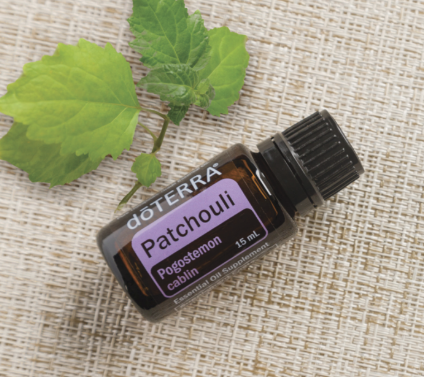Happy Monday Tribe!
I hope you all had a wonderful weekend, and amazing Fourth of July! Last week I mentioned that I am switching to ONE office starting in August. I won’t be in mission valley after that, so please schedule accordingly:)
________________________
I came across a very interesting article this weekend, as you know i’m always nerding out to more science!
Some of this I already know, but I found it interesting enough to write about for all of you guys to learn about!
The article came out of a psychiatry journal, but the physical and emotional are so interconnected, it’s no wonder they are finding the two so intertwined!
You’ve heard me talk extensively about the vagus nerve. One of the 12 cranial nerves that exits out of the skull. One of our best calming nerves we got! It starts up in the head, but continues down into the abdomen.

(not my image)
It is part of what’s called the parasympathetic nervous system. This system overseas a numerous amount of bodily functions, mood control, immunity, digestion, heart rate.
This nerve connects the brain and the GI tract by sending information to the brain about how the inner organs are doing. Stimulating this nerve influences the brain stem to play crucial roles in mood and anxiety disorders (called monoaminergic brain systems).
What else? There’s also evidence that gut bacteria have an effect of mood, by affecting the vagus nerve.
Let’s talk about the GUT brain axis for a minute. The gut has its own nervous system, called the enteric nervous system. It produces more than 30 neurotransmitters and has more neurons than the spine! Why aren’t we addressing the gut more?! (well, i do, but just saying)…….
Hormones that are released from this system cross the blood brain barrier and work together with the vagus nerve. The gut is also a huge important factor in controlling the immune system, but also the vagus nerve has immune modulating properties to work with it.
So this little (or big) nerve has a role with the gut, brain and inflammation.
How is the vagus nerve linked between our main (central) nervous system, and this enteric nervous system??
The gut brain axis includes the brain, spinal cord, autonomic NS, HPA axis. The vagus nerve sends signals from the brain to the gut which account for 10-20% and then transports signals from the gut wall to the brain which accounting for 80-90% of all the fibers.
This nerve also regulates the HPA axis, which releases hormones from the hypothalamus in the brain. It leads to cortisol release, a stress hormone . Which we all know stress hormones affect us all around. The vagus nerve also has lines of communications to influence intestinal function, which are under the influence of the gut microbes.
How is the vagus linked to the immune system?
The GI tract is faced all the time with food antigens, pathogens, microbiotica that may cause intestinal inflammation. This is HIGHLY innervated by the vagus nerve. It has many anti-inflammatory capacities ( i won’t go into them all ). For those that want to nerd out you know who you are, I’ll copy it here:
“The anti-inflammatory capacities of the vagus nerve are mediated through three different pathways (18). The first pathway is the HPA axis, which has been described above. The second pathway is the splenic sympathetic anti-inflammatory pathway, where the vagus nerve stimulates the splenic sympathetic nerve. Norepinephrine (NE) (noradrenaline) released at the distal end of the splenic nerve links to the β2 adrenergic receptor of splenic lymphocytes that release ACh. Finally, ACh inhibits the release of TNF-α by spleen macrophages through α-7-nicotinic ACh receptors. The last pathway, called the cholinergic anti-inflammatory pathway (CAIP), is mediated through vagal efferent fibers that synapse onto enteric neurons, which in turn release ACh at the synaptic junction with macrophages (18). ACh binds to α-7-nicotinic ACh receptors of those macrophages to inhibit the TNF-α (69). Compared to the HPA axis, the CAIP has some unique properties, such as a high speed of neural conductance, which enables an immediate modulatory input to the affected region of inflammation (70). Therefore, the CAIP plays a crucial role in the intestinal immune response and homeostasis, and presents a highly interesting target for the development of novel treatments for inflammatory diseases related to the gut immune system (6, 18).”
What about the vagus for mood and PTSD?
Stimulating the vagus nerve decreases hippocampal activity in the brain through a neurotransmitter called GABA. The hippocampus is pretty critical in the fear circuit. When we decrease this activity, we calm the body. It’s been shown in numerous studies to decrease anxiety.
What about inflammatory bowel diseases?
Vagus nerve stimulation gives an inflammatory response to endotoxins. It also stimulates the spleen through its connection to the splenic nerve. It’s been shown to calm down ulcerative colitis, crohns disease and also rheumatoid arthritis.
CONCLUSION…….
The vagus nerve is an essential part of the brain–gut axis and plays an important role in the modulation of inflammation, the maintenance of intestinal homeostasis, and the regulation of food intake, satiety, and energy homeostasis. An interaction between nutrition and the vagus nerve is well known, and vagal tone can influence food intake and weight gain.
The vagus nerve plays an important role in the pathogenesis of psychiatric disorders, obesity as well as other stress-induced and inflammatory diseases.
__________________
So that’s all great right, but how do we stimulate that vagus nerve for our health? In the article they stimulate it through electrodes, but we like other means .
1. Breathing. Breathing properly is HUGE for activating the vagus nerve. It runs through the diaphragm, so many bowel problems come from improper movement of the diaphragm.
2. Craniopathy. Of course! Directly taking pressure off the vagus nerve where it’s entrapped has a huge impact on it’s ability. Its the BEST way in my opinion.
3. Quantum neurology. Once the pressure is taken off the nerve you can also directly affect its activation through neurological testing and light therapy.
4. Exercise. Some say yoga and meditation has a big effect on the vagus nerve, but i’m not huge into yoga, so I say proper breathing and stretching techniques are your best bet.
Many patients experience extreme calmness after an adjustment and this is why! We are stimulating that vagus nerve! Mood will change, guts will changes, and inflammation will change!
I mean look at the circuit of it’s path!!!

(not my image)
Reference:
Division of Molecular Psychiatry, Translational Research Center, University Hospital of Psychiatry, University of Bern, Bern, Switzerland
2Department of Gastroenterology and Hepatology, University Hospital Zurich, Zurich, Switzerland

OIL OF THE WEEK
ON the spotlight this week is Do Terra Patchouli. What better way to stimulate the vagus nerve than through aromatherapy. That’s in the research too!
Patchouli is a bushy herb from the mint family with stems reaching two or three feet in height and bearing small, pink-white flowers. Easily recognized for its rich, musky-sweet fragrance, Patchouli is regularly used in the perfume industry as well as in scented products such as laundry detergents and air fresheners. Patchouli is beneficial to the skin in many ways. It is often topically used to help reduce the appearance of wrinkles, blemishes, and minor skin imperfections and to promote a smooth, glowing complexion. The fragrance of Patchouli provides a grounding, balancing effect on emotions.
Uses
- Combine with Peppermint and apply to the forehead, temples, or back of the neck after a long day of work.
- Apply one to two drops to help reduce the appearance of wrinkles, blemishes, or problem skin areas, or add to your favorite moisturizer.
- Combine with Vetiver and apply to the bottoms of feet to help calm emotions.
Directions for Use
Diffusion: Use three to four drops in the diffuser of your choice.
Internal use: Dilute one drop in 4 fl. oz. of liquid.
Topical use: Apply one to two drops to desired area. Dilute with doTERRA Fractionated Coconut Oil to minimize any skin sensitivity.
Have a happy and healthy week,
Dr Rachel hamel

